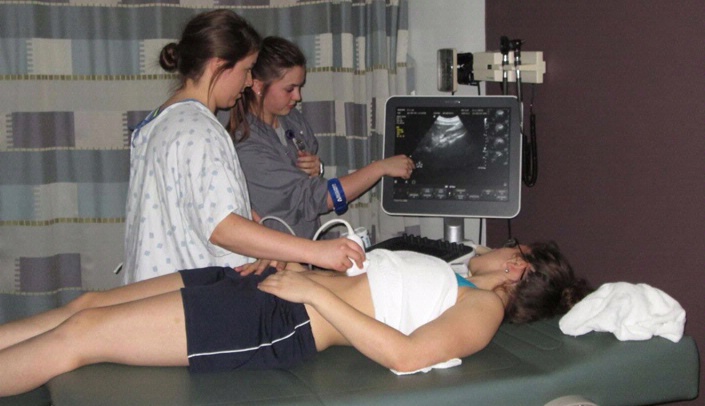Traditionally, students have been educated within their disciplines. Often, it’s only after graduation that they begin working with professionals from other health disciplines. One reason for this is already demanding curriculums and the challenge of coordinating educational and clinical schedules.
Sheila Williams, assistant professor in the physician assistant program in the College of Allied Health Professions-Kearney Campus, said it’s imperative for student to get experience in interprofessional teams to provide the best possible outcomes for their future patients.
|
|
“We’re seeing more health care professions working together as collaborative teams and providing better services and optimal care for patients. If we can foster this in our health care education, it will carry over to their professional careers,” Williams said. “We are so privileged to have several allied health programs and nursing programs studying together in one building here in Kearney. This natural collaboration lends itself to many new opportunities for interprofessional educational activities for all of our students.”
A casual discussion between Williams and Ellie Miller, instructor in the radiation science technology education division in the College of Allied Health Professions-Kearney Campus, led to interprofessional educational experiences last week and this week. To Williams and Miller’s knowledge, this was the first time the college’s sonography, radiography and PA students collaborated in an academic setting.
Last week, PA students learned how to do abdominal physical exams with sonography students providing insight into ultrasound. This week, PA and radiography students exchanged information in the Health Science Education Complex’s energized lab from each other’s perspective as it applies to X-ray technology.
The experiences made a big impression on students. Kearney PA student Lindsay Peterson said the exercise was a phenomenal experience.
“Not only did we get to appreciate the complexity of another profession, but also we were able to get our hands on the equipment and test our own skills,” Peterson said. “It allowed us to gain a deeper understanding of the expertise that each of us portray in our own profession. It is a great reminder that we are all part of a team working together when it comes to providing our future patients with the best care possible.”
It was a small but important step.
“Many times, physician assistant students won’t have seen ultrasound performed until they get on the job,” said Williams. “Knowing what they’re looking at when they see these scans later in clinic is helpful.”
Miller said students retain the information longer.
“Students can take the classroom knowledge and apply it during peer-to-peer interactions. Correlating the anatomy in the ultrasound with the clinical exam makes those classroom concepts more concrete. Another benefit for the future providers is being able to actually see the strengths and limitations of ultrasound.”
